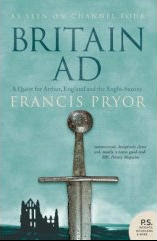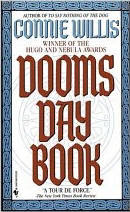2,000,000 books displayed in 2 halls of the convention centre across 72 hours over 8 days, plus 6.5 hours of browsing while spending $58 on 52 books before lugging the resultant 13kg load home, can only add up to one thing: It’s Bookfest time again! They call it the biggest book sale in the world, and since the proceeds are all for charity it’s the perfect excuse to load myself up with as many books as I can carry.
It wasn’t as well-organised as in previous years. The Unpriced (i.e. dirt cheap) section had no separate table for Penguins, there were fewer rows of books along each side of the Paperback Fiction tables, no crates of books at the back from which to replenish the tables, and two tables of Unsorted Books that no-one had bothered to categorise. (And when I say table, I really mean two rows of tables side by side forming one giant surface.) There were no price guides posted, either, but that didn’t matter as it’s purely theoretical and in practice all books are fifty cents. The emcee who usually calls out requests for books and stray family members was absent, replaced by the same songs playing over and over on a 45-minute loop until someone had mercy and shut it off. And all sections were short on classics.
 But any shortcomings in the halls weren’t really reflected in the haul; I bought only 5 fewer books than last year. As ever, it included plenty of books that I wasn’t looking for and lacked plenty that I was. I managed just 5 books for the 888 Challenge, doing little better in the whole Bookfest than in one branch of the library; though I could have brought home more if I hadn’t found most of them in the High Quality section, where I lacked both the money and the space to buy any more than I did. But I am very much looking forward to crossing off Every Dead Thing, The Angel of Darkness, Runaway Jury, Shogun, and Cocaine Blues (the more so since the last one isn’t in the library; I was thrilled to find it). I finally managed to get hold of some Anthony Trollope; not the one I wanted, but the first of the Barchester novels, and how rare it is to find the first of a series at the Bookfest. Even greater good fortune attended my discovery of the first two of a three-volume complete collection of Sherlock Holmes (handy since I also bought Nicholas Meyer’s The Seven-per-cent Solution which references Holmes).
But any shortcomings in the halls weren’t really reflected in the haul; I bought only 5 fewer books than last year. As ever, it included plenty of books that I wasn’t looking for and lacked plenty that I was. I managed just 5 books for the 888 Challenge, doing little better in the whole Bookfest than in one branch of the library; though I could have brought home more if I hadn’t found most of them in the High Quality section, where I lacked both the money and the space to buy any more than I did. But I am very much looking forward to crossing off Every Dead Thing, The Angel of Darkness, Runaway Jury, Shogun, and Cocaine Blues (the more so since the last one isn’t in the library; I was thrilled to find it). I finally managed to get hold of some Anthony Trollope; not the one I wanted, but the first of the Barchester novels, and how rare it is to find the first of a series at the Bookfest. Even greater good fortune attended my discovery of the first two of a three-volume complete collection of Sherlock Holmes (handy since I also bought Nicholas Meyer’s The Seven-per-cent Solution which references Holmes).
Elsewhere my luck didn’t hold. I found only one Agatha Christie (the ending of which I remembered) and the only Ngaio Marsh was multiple copies of one I’ve got (they were curiously well-supplied with copies of Jeffrey Archer’s A Quiver Full of Arrows and le Carre’s The Russia House, too - though one fewer of each by the time I’d been through). There were plenty of copies of North and South ... by John Jakes, and I found Northern Lights ... by Nora Roberts. No Elizabeth Gaskell and Philip Pullman, alas. (I had thought that after so much wanting to read the Gaskell N&S last year, and not finding it, that this year - after having borrowed it from the library – I’d be tripping all over copies, but no.) And still no Lolita.
 Another author there was a lot of was Dennis Wheatley, whose works I noticed because I’d first heard of him only last week, in a documentary about the ploys used by the British to mislead the Nazis during WW2. Wheatley was one of their generators of ideas, though was of limited use as he favoured the outlandish and impractical - and his style of writing sounded equally bizarre, albeit very successful. After inspecting a few donated paperbacks, I can say that his books really were the B-grade horror stuff that I’d expected. My personal favourite was The Haunting of Toby Jugg - a tale of Black Magic. (No, I was not tempted, not even for fifty cents and the off-chance that it might fall into the ‘so bad it’s good’ category. And there was no indication as to whether the name was a crockery-inspired pun or merely an unfortunate coincidence.)
Another author there was a lot of was Dennis Wheatley, whose works I noticed because I’d first heard of him only last week, in a documentary about the ploys used by the British to mislead the Nazis during WW2. Wheatley was one of their generators of ideas, though was of limited use as he favoured the outlandish and impractical - and his style of writing sounded equally bizarre, albeit very successful. After inspecting a few donated paperbacks, I can say that his books really were the B-grade horror stuff that I’d expected. My personal favourite was The Haunting of Toby Jugg - a tale of Black Magic. (No, I was not tempted, not even for fifty cents and the off-chance that it might fall into the ‘so bad it’s good’ category. And there was no indication as to whether the name was a crockery-inspired pun or merely an unfortunate coincidence.)
Between the avid book hunting and the fun speculations such as: Did any of the myriad copies of The Anti-Cancer, Anti-Heart Attack Cookbook come from deceased estates? Were all those books on making money donated because the previous owners got rich and no longer needed them, or because they didn’t work? Who would buy copies of the Guinness Book of World Records that’re older than I am? How is it that they have seemingly every book ever published by Robert Ludlum, except The Bourne Ultimatum, which I need to complete the trilogy? And did the Book of Mormon end up on the Humour & Oddities table by accident or design? Those six and a half hours passed in no time - although the walk home from the station seemed to take forever. But all the aches and pains were worth it to enjoy the highlight of any booklover’s year, and come next January I’ll be doing it all again.






































